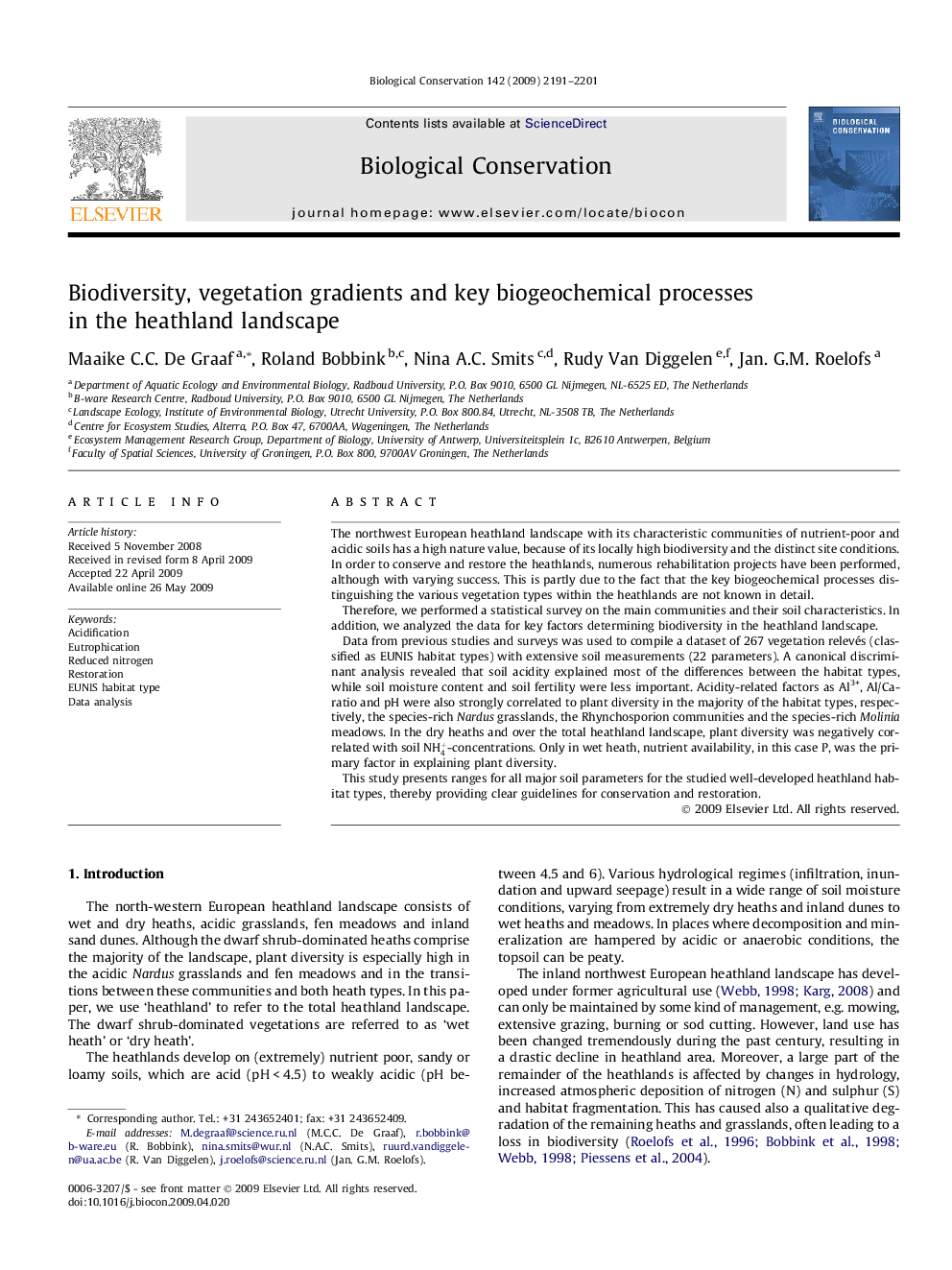| Article ID | Journal | Published Year | Pages | File Type |
|---|---|---|---|---|
| 4386215 | Biological Conservation | 2009 | 11 Pages |
The northwest European heathland landscape with its characteristic communities of nutrient-poor and acidic soils has a high nature value, because of its locally high biodiversity and the distinct site conditions. In order to conserve and restore the heathlands, numerous rehabilitation projects have been performed, although with varying success. This is partly due to the fact that the key biogeochemical processes distinguishing the various vegetation types within the heathlands are not known in detail.Therefore, we performed a statistical survey on the main communities and their soil characteristics. In addition, we analyzed the data for key factors determining biodiversity in the heathland landscape.Data from previous studies and surveys was used to compile a dataset of 267 vegetation relevés (classified as EUNIS habitat types) with extensive soil measurements (22 parameters). A canonical discriminant analysis revealed that soil acidity explained most of the differences between the habitat types, while soil moisture content and soil fertility were less important. Acidity-related factors as Al3+, Al/Ca-ratio and pH were also strongly correlated to plant diversity in the majority of the habitat types, respectively, the species-rich Nardus grasslands, the Rhynchosporion communities and the species-rich Molinia meadows. In the dry heaths and over the total heathland landscape, plant diversity was negatively correlated with soil NH4+-concentrations. Only in wet heath, nutrient availability, in this case P, was the primary factor in explaining plant diversity.This study presents ranges for all major soil parameters for the studied well-developed heathland habitat types, thereby providing clear guidelines for conservation and restoration.
